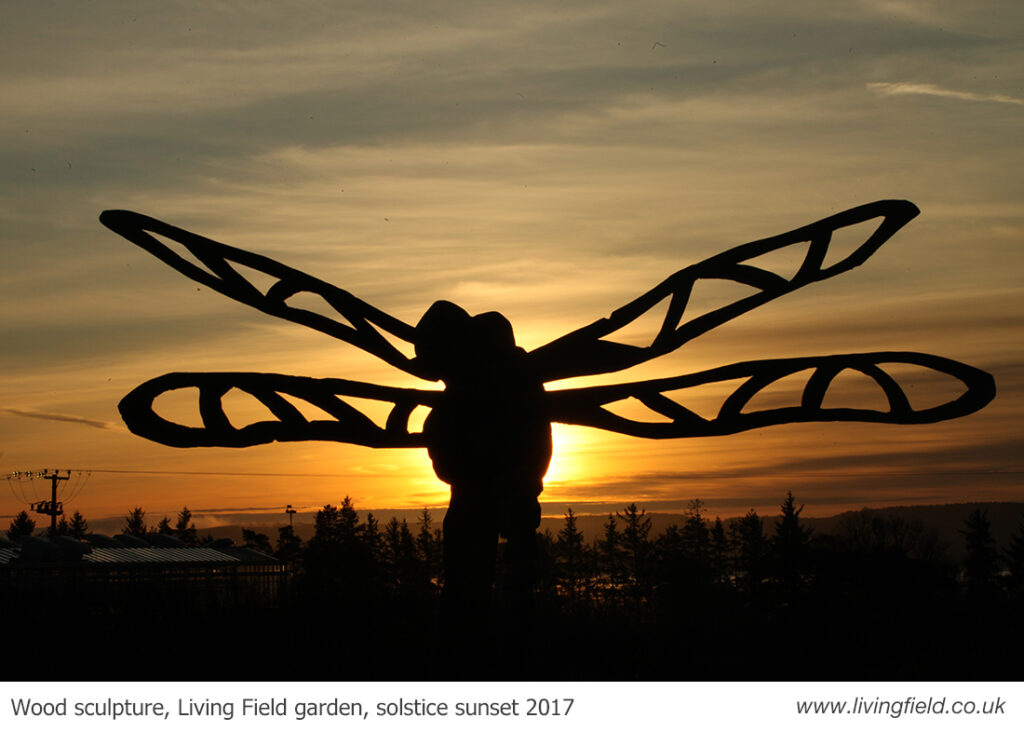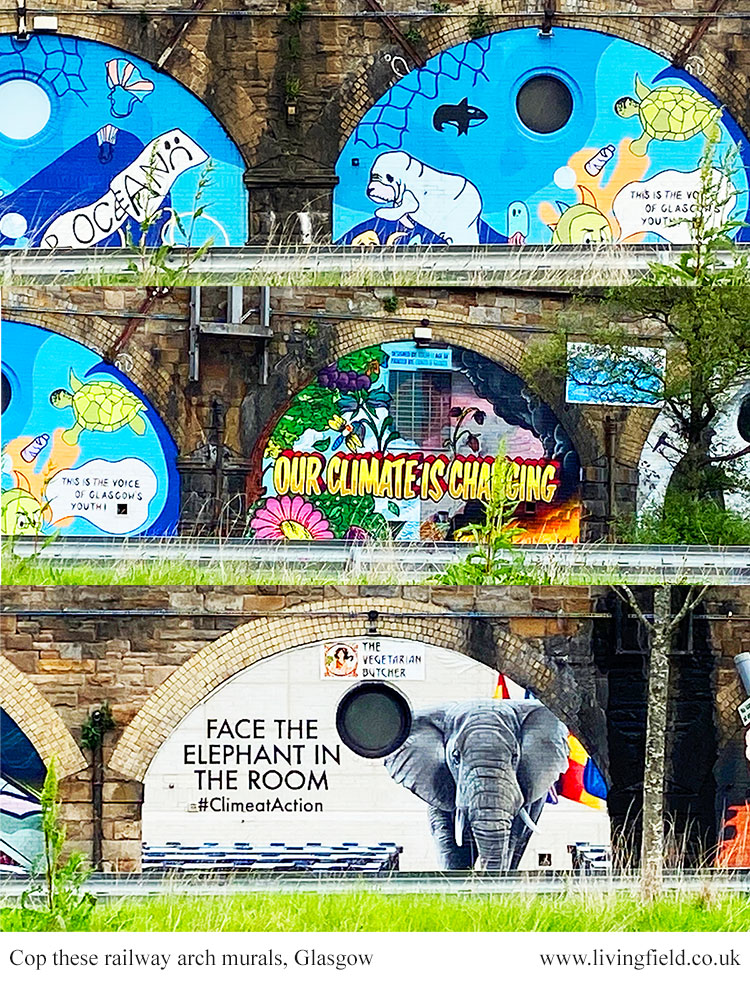Welcome to the Living Field web site
Latest ….. Farming Fit for the Future exhibition on regenerative agriculture ….. Living Pavilion 2019 Melbourne Australia ….. Humus miraculum-Nature under screen exhibition Cahors France …. VESS Bruce Ball’s visual evaluation of soil structure …. Legume pages at the 5000-Years project are being revamped ….. Edible fungi club – new interest at the Living Field by Gill Banks ….. Ad Gefrin | Yeavering notes on the new museum and archaeological site in Northumberland ….. Original plan of the habitats and plant exhibits at the Living Field ….. Huntly mapping project Land use, climate change and food …. See News for Earth Overshoot Day and updates from Bioregioning Tayside and SEDA Land …. New Growers network for bere the barley landrace ….. All Among the Barley – history of a song by Russ Clare ….. Giant rice grain sculptures Singapore …. Plant Atlas 2020 by the Botanical Society of Britain and Ireland….. Scottish Real Bread Festival held in Fife Feb 2023 ….. Copernicus satellite images of the 2022 Drought ….. New web resources at SEDA Land ….. Update on the 2022 drought …..

Mid July 22 – most of the UK baked in a record heat wave but the western isles were much cooler and wetter, which these blackface ewes and lambs appreciated. Thanks to gk-images for this photograph taken 2100, 13 July.
… continued …..
Inverness Botanics and some notes on the local climate at 57N ….. Interested in Ecological Restoration? Get involved with SER Europe ….. and drawings of Pictish Beasts by Kathryn Owen ….. James Hutton’s Unconformity on Arran …. Ancient grains – much missed by the editor so he grew his own .…. Medicinal forage Kinloss Abbey Moray ..… Owlbirds – update from Kit Martin on her moth project …. Global wheat a summary of who grows what ….. Making ink from oak galls by Jean Duncan ….. Ancient and modern – techniques with wool in textile art by Ruth Black …. Winter solstice revisited.

Flax was once grown widely in Scotland, commonly processed for fibre on a small scale. As for many other crops, it declined due to cheaper imports of flax, jute and cotton. More on the Living Field at 5000 Fibres.
origins and content
The Living Field has been run since 2001 by staff at the James Hutton Institute, Dundee, UK. We work through outreach, education and shared experience to promote sustainable production of food and other products from the land.
The web site opened in spring 2014 to celebrate 10 years of the Living Field Garden. New sowings and plantings stopped during the pandemic. The Living Field now operates through its wider community, exploring sustainable use of land and natural products.
The sites hosts ‘Pages’ and ‘Posts’. The main Pages are listed in the upper header/menu shown above the header image. Each page has a set of sub-pages dealing with different aspects of the main topic. Pages are not static in that the content may be revised and new sub-pages added.
Posts include articles, photographs, art and craft – some written by Hutton Institute people but many contributed by the wider Living Field community. Recent posts are listed in the right-hand menu. By June 2023 there were over 240 posts – they can be viewed in the month by month archive at the bottom of the menu.

Cereal crops, mainly wheat and barley, are filling nicely on the Carse of Gowrie, mid-July, here between tree-lines and small copses, looking down to the Tay, Fife beyond. Thanks to gk-images for this photograph.
To see all the pages and posts relevant to a topic, enter a word in ‘search’, also in the right-hand menu.
We hope you enjoy visiting the site. You will find a summary of current activities and collaborations in the list lower down this page under Regular Content.
Regular content
- New articles, opinion pieces, photographs and art work are published under Posts, the most recent listed in the right-hand margin.
- The News page links to what’s going on in the Living Field project and other matters topical.
- Climate and sustainable food is a new series of articles covering climate and production, past events and trends, current status and action for the future. The series will continue during 2024.
- The Garden relates the evolving habitats and and living plant exhibits in what has been the centrepiece of the project, created in a corner of the Institute’s farm in 2004. Activity in the garden was suspended during lockdown and most parts of it have now ‘gone wild’.

Bog asphodel thrives in wet soils, commonly in the depressions between tussocks of heather. In summer 2013, great expanses of the plant in flower were thronged by a range of bee species. It’s been used in the tradition for dying cloth. More on local dye plants at 5000-Dyes
- The Year records the seasonal cycle in the croplands through the quarter days and cross quarter days. Various posts connect to it, for example on daylength in the north.
- 5000 years is a long term project on the innovations that have sustained life in the maritime croplands and more widely since the neolithic. We with 5000-Plants – fibres, dyes, weeds, and coming soon – cereals and legumes. The 5000 years pages are connected to many Posts written by growers, artists and craft workers.
- People profiles collaborations with the Living Field in art and science, including Jean Duncan (archaeology, food, Capsella), Tina Scopa (plant pressing workshops) and the family of Slovenian artist Vida Fakin.

The Living Field garden installed this large wood sculpture of a dragonfly in the centre of the meadow. The sculpture was made and donated to the Living Field by Dave Roberts of the Hutton Institute, Dundee.
Contacts
The Living Field exists through the efforts of many people. For more information on its origin, aims and charitable funding, please see Origins of the Living Field and About.
Gladys wright, who had been involved since the beginning of the Living Field in 2001, retired from the James Hutton at the end of 2019. We hope she will continue to be part of the Living Field community. From a muddy field describes her contributions to the project.
All enquiries on the Living Field project, garden, CD, study centre, web site, The Year, the 5000 Years project: Geoff Squire at geoff.squire@hutton.ac.uk or geoff.squire@outlook.com.

Photographs
All images on this site are taken and prepared by the Living Field team unless stated otherwise. Please respect our ownership of these images . The Living Field is funded by charities and is not profit-making.
Photographs on this Welcome page change with the turning of the year.
A selection of images and quotes are given in the right-hand menu – they will also change with the year.

